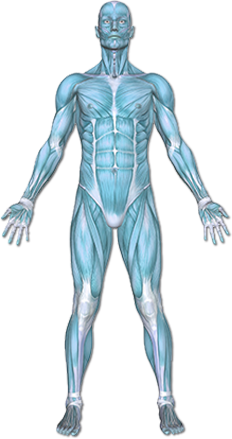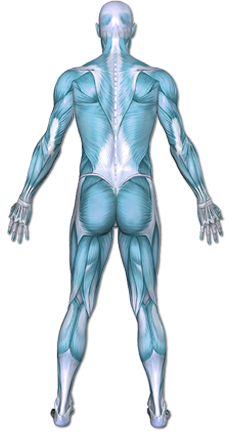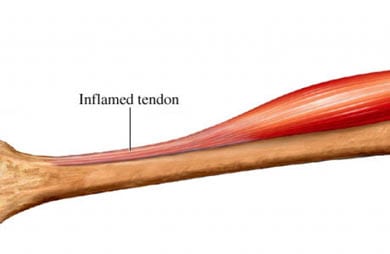Elbow Tendinitis
Tendons connect muscle to bone and help move joints. Tendinopathy is an injury to the tendon. These injuries tend to occur in tendons near joints such as knee, shoulder, and ankle. The injuries can include:
Tendinitis—An inflammation of the tendon. Although this term is used often, most cases of tendinopathy are not associated with significant inflammation.
Tendinosis—Microtears in the tendon tissue with no significant inflammation.
The following tendons are often involved:
- Wrist extensors near the elbow, on the outside
- Wrist flexors near the elbow, on the inside
- Tendinopathy and the associated pain may take months to resolve. You may need medication for pain relief.
Copyright © Nucleus Medical Media, Inc.
This content was created using EBSCO’s Health Library
Tendinopathy is caused by overuse of a muscle-tendon unit. The strain on the tendon causes very tiny tears that accumulate over time. There can also be inflammation. These tears cause pain and can eventually change the structure of the tendon.
This content was created using EBSCO’s Health Library
Tendinopathy is more common in women than in men. Factors that may increase your chance of getting tendinopathy include:
- Overuse can be the result of doing any activity too much
- Strenuous or repetitive activities
- Sports
- Physical labor
- Housework
- Physical problems
- Muscle imbalance
- Decreased flexibility
- Overweight
- Advancing age
This content was created using EBSCO’s Health Library
Symptoms may include:
- Pain in the tendon or surrounding area, particularly with activity
- Decreased motion of related joints
- Local swelling
- Weakness
This content was created using EBSCO’s Health Library
The doctor will ask about your symptoms and medical history. A physical exam will be done. If your symptoms are severe, your doctor may need some images of the tendon and bone. Imaging tests may include:
- X-ray
- MRI scan
- Ultrasound
This content was created using EBSCO’s Health Library
Your therapist will likely see you in the first two stages of recovery. During stage 1, the therapy will focus on protecting the tendon from additional trauma and reducing inflammation. In stage 2, the therapist will educate you on gentle to progressive stretching exercises in order to convince the tendon fibers to match the line of pull of the muscles. These stretches will be part of a home exercise program that includes stretching, light strengthening and pain management. Each time that you stretch or strengthen you may also be instructed to use ice and rest to reduce the inflammation immediately and not cause another injury. The therapist will evaluate your work or recreational activities and make recommendations for reducing strain to the elbow.
This content was created using EBSCO’s Health Library
To prevent tendinopathy:
- Gradually work yourself into shape for a new activity.
- Gradually increase the length of time and intensity of activities.
- If you have a tendon that has been a problem, gradually stretch out that muscle/tendon unit.
- Strengthen the muscle to which the tendon is attached.
- If you have pain, do not ignore it. Early treatment can prevent the problem from becoming serious.
- Learn to back off from activities if you are tired or not used to the activity.
- Warm-up the affected area before activity.
This content was created using EBSCO’s Health Library
This content was created using EBSCO’s Health Library
- Exercise-induced leg pain. American College of Sports Medicine website. Available at: http://www.acsm.org/docs/current-comments/exercis-inducedlegpain.pdf Accessed March 18, 2013.
- Mayor RB. Treatment of athletic tendinopathy. Conn Med. 2012;76(8):471-475.
- Patellar tendinopathy. EBSCO DynaMed website. Available at: http://www.ebscohost.com/dynamed Updated November 3, 2012. Accessed March 18, 2013.
- Patellar tendon tear. American Academy of Orthopaedic Surgeons Ortho Info website. Available at: http://orthoinfo.aaos.org/topic.cfm?topic=A00512 Updated August 2009. Accessed March 18, 2013.
- 10/26/2010 DynaMed’s Systematic Literature Surveillance. http://www.ebscohost.com/dynamed: Massey T, Derry S, et al. Topical NSAIDs for acute pain in adults. Cochrane Database Syst Rev. 2010;(6):CD007402.
- 4/24/2014 DynaMed’s Systematic Literature Surveillance http://www.ebscohost.com/dynamed: Wise JN, Weissman BN, et al. American College of Radiology (ACR) Appropriateness Criteria for chronic foot pain. Available at: http://www.acr.org/~/media/ACR/Documents/AppCriteria/Diagnostic/ChronicFootPain.pdf. Updated 2013. Accessed April 24, 2014.
This content was created using EBSCO’s Health Library



